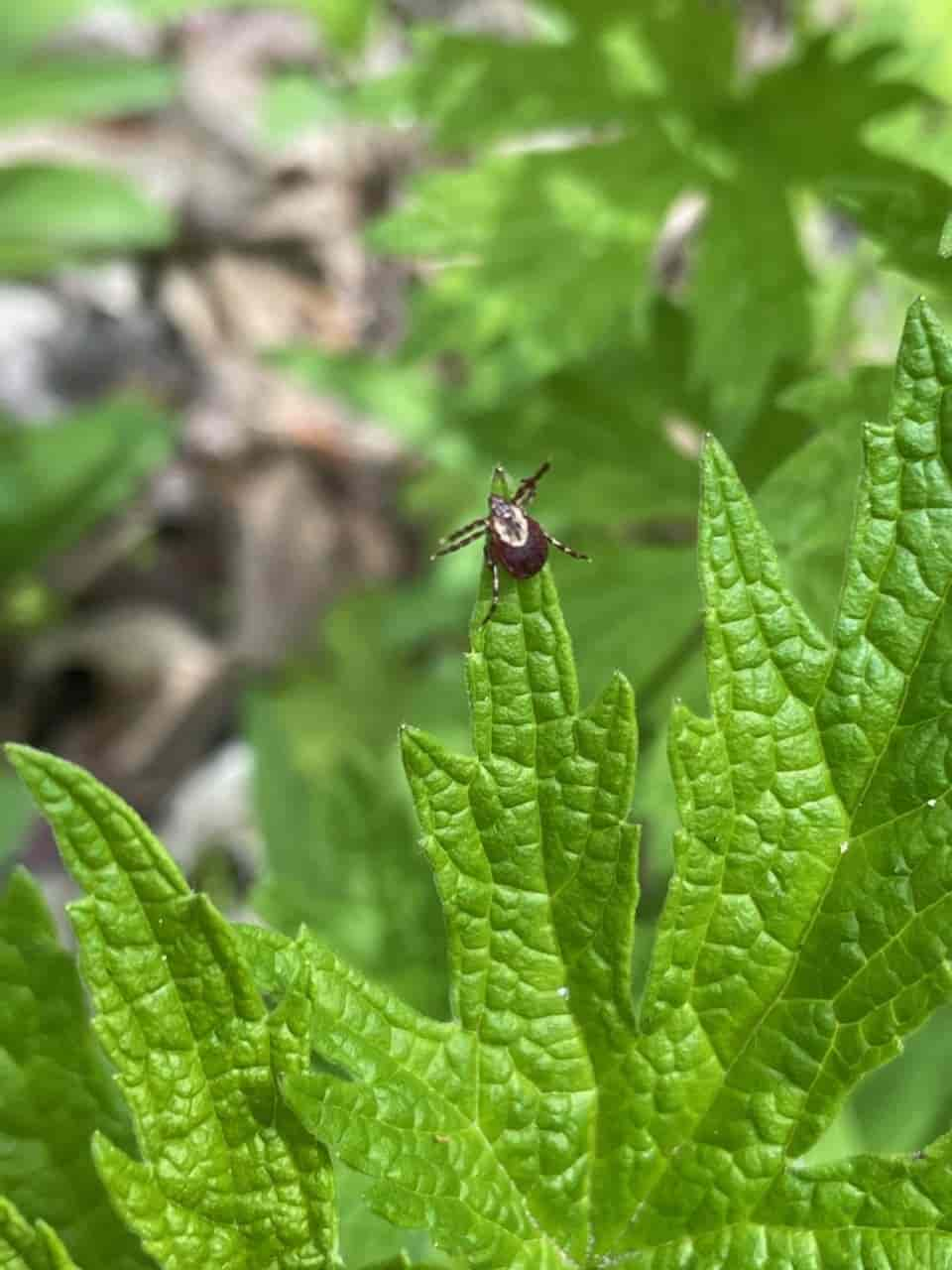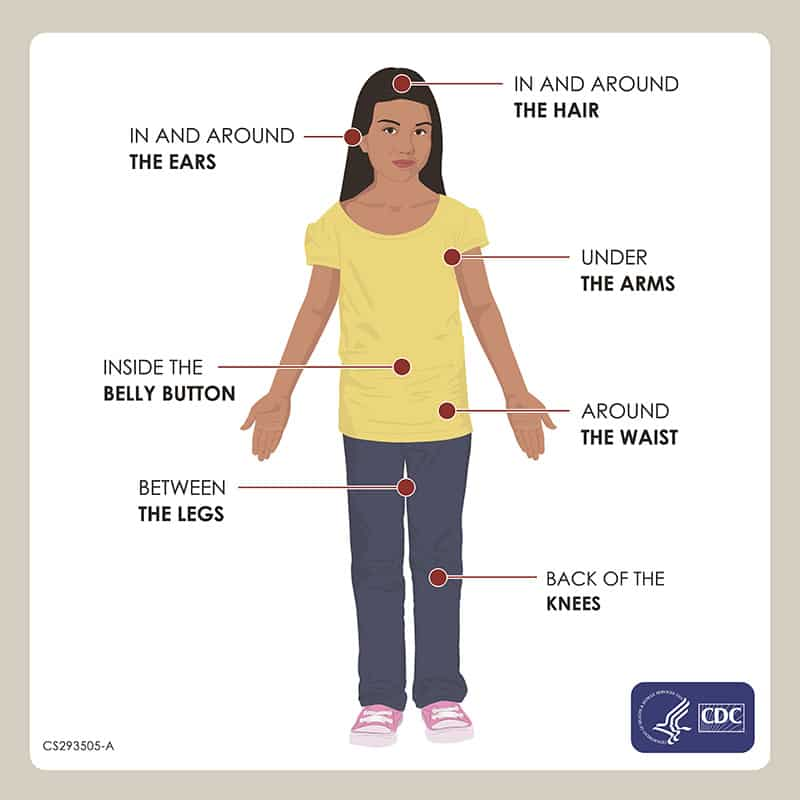No
About Ticks
 Questing Tick
Questing TickTicks are arachnids (distantly related to spiders) that feed on the blood of animals (such as rodents, rabbits, deer and birds) but will bite people too.
Ticks are generally found near the ground in brushy or wooded areas. They cannot jump or fly. Instead, they climb grasses or shrubs and wait for you to brush against them. This is called “questing". When this happens, they hang on to you with small claws and then find a spot to attach and take a blood meal.
Preventing Tick Bites
- Before spending time outdoors, apply repellents that contain 20-30% DEET on exposed skin and clothing.
- Treat clothing and gear with repellents containing 0.5% permethrin.
- Avoid wooded and brushy areas with high grass and leaf litter, and walk in the center of trails.
- Examine your entire body, as well as gear and pets, after returning indoors. Promptly remove any attached ticks.
After Leaving Areas Where Ticks Live
 Areas of the body to check for ticks.
Areas of the body to check for ticks.- Shower as soon as possible.
- Look for ticks on your body and in your bedding for 3 days. Some ticks are only the size of a poppy seed and can be anywhere on your body.
- Look in your armpits, in your hairline, behind your ears and knees, in your belly-button, and in your groin area. Have a family member help check the areas on your body that you cannot easily see.
- Put the clothes you were wearing in the dryer on high for 60 minutes to kill any ticks that may be on your clothes. Just washing your clothes may not kill ticks.
- Check your pets for ticks too, and place them on a tick control medicine as recommended by your veterinarian.
Safe Tick Removal
- Use fine-tipped tweezers to grasp the tick as close to the skin's surface as possible.
- Pull upward with steady, even pressure. Don't twist or jerk the tick (this can cause the mouth-parts to break off and remain in the skin). If this happens, remove the mouth-parts with tweezers. If you are unable to remove the mouth easily with clean tweezers, leave it alone and let the skin heal.
- After removing the tick, thoroughly clean the bite area and your hands with rubbing alcohol, an iodine scrub, or soap and water.
- Dispose of a live tick by submersing it in alcohol, placing it in a sealed bag/container, wrapping it tightly in tape, or flushing it down the toilet. Never crush a tick with your fingers.
 Four steps to safe tick removal
Four steps to safe tick removal
Check Symptoms Most common symptoms of tick-related illnesses:
- Fever/chills: Patients can experience fever at varying degrees and time of onset.
- Aches and pains: Tick-borne disease symptoms include headache, fatigue, and muscle aches. The severity and time of symptom onset may depend on the disease and the patient's personal tolerance level.
- Rash/skin ulcers: Rocky Mountain spotted fever (RMSF), ehrlichiosis, and tularemia can result in distinctive rashes and/or ulcers. Not all infected individuals will develop a rash.
- If you become sick and have been exposed to ticks, be sure to tell your doctor about your exposure to ticks.
Additional Resources